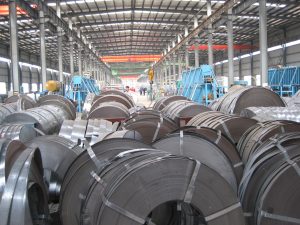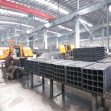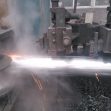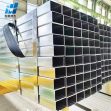The “two-carbon” strategy has far-reaching implications
1. The “two-carbon” strategy increases the cost of steel production
To complete the “double carbon” target, Chinese iron and steel industry needs a large capital investment in its production structure and volume. In 2020, China’s crude steel output is 1.065 billion tons, accounting for 56.7% of the global total, ranking the first in the world. China’s carbon emissions account for more than 60% of the global carbon emissions, accounting for about 15% of China’s total carbon emissions. Moreover, China is dominated by a long process of high carbon emission intensity (90%), and energy structure adjustment and new technology research and development is a long process. According to experts’ calculation, if China’s steel industry wants to achieve carbon neutrality, it needs to invest about 550 billion yuan every year for 30 consecutive years, equivalent to an investment of 550 yuan per year for tons of welded steel pipe. These investments undoubtedly increase the cost of steel products.

2. The “Dual carbon” strategy accelerates the pace of merger and reorganization
With the development of high quality and high standard customized supply, the merger and reorganization of Chinese iron and steel enterprises will become more frequent in the future, and the degree of concentration will continue to improve. Most of them will emerge as groups, forming a pattern of “one super, multi-strong and multi-professional”.
This year, there are a number of China steel tube manufacturers involved in merger and reorganization and production capacity cooperation matters, for example, Baowu Group through restructuring capacity reached nearly 200 million tons, covering stainless steel, automotive plate, silicon steel, seamless pipe, wheel steel and other product categories, occupy a leading position in most areas of China. Angang restructured Bensteel to become China’s second largest steel producer with 63m tons of crude steel capacity. Of course, the steel groups formed now will be differentiated and reorganized along with the market competition of rectangular hollow section, and China’s steel industry will gradually evolve into a pattern of “one super, multi-strong and multi-professional”.
3. The “two-carbon” strategy promotes the process reengineering of the iron and steel industry
More than 90% of China’s steel is produced through the blast furnace long process, and the carbon emissions of steel in the long process are 1.82 tons on average. The most direct way to reduce carbon is to change the technological process and replace the long process with the short process, while the waste steel resources in China need an accumulation process. In 2019, the production volume of waste steel resources in China was 240 million tons, an increase of 9% year on year. The amount of thinner wall steel pipe produced in China is about 260 million tons, and it is expected to reach 300 million tons by 2025, so it is not realistic to change all the long process to short process in a short time.
Tel: +86 18202256900 Email: steel@fwssteel.com










